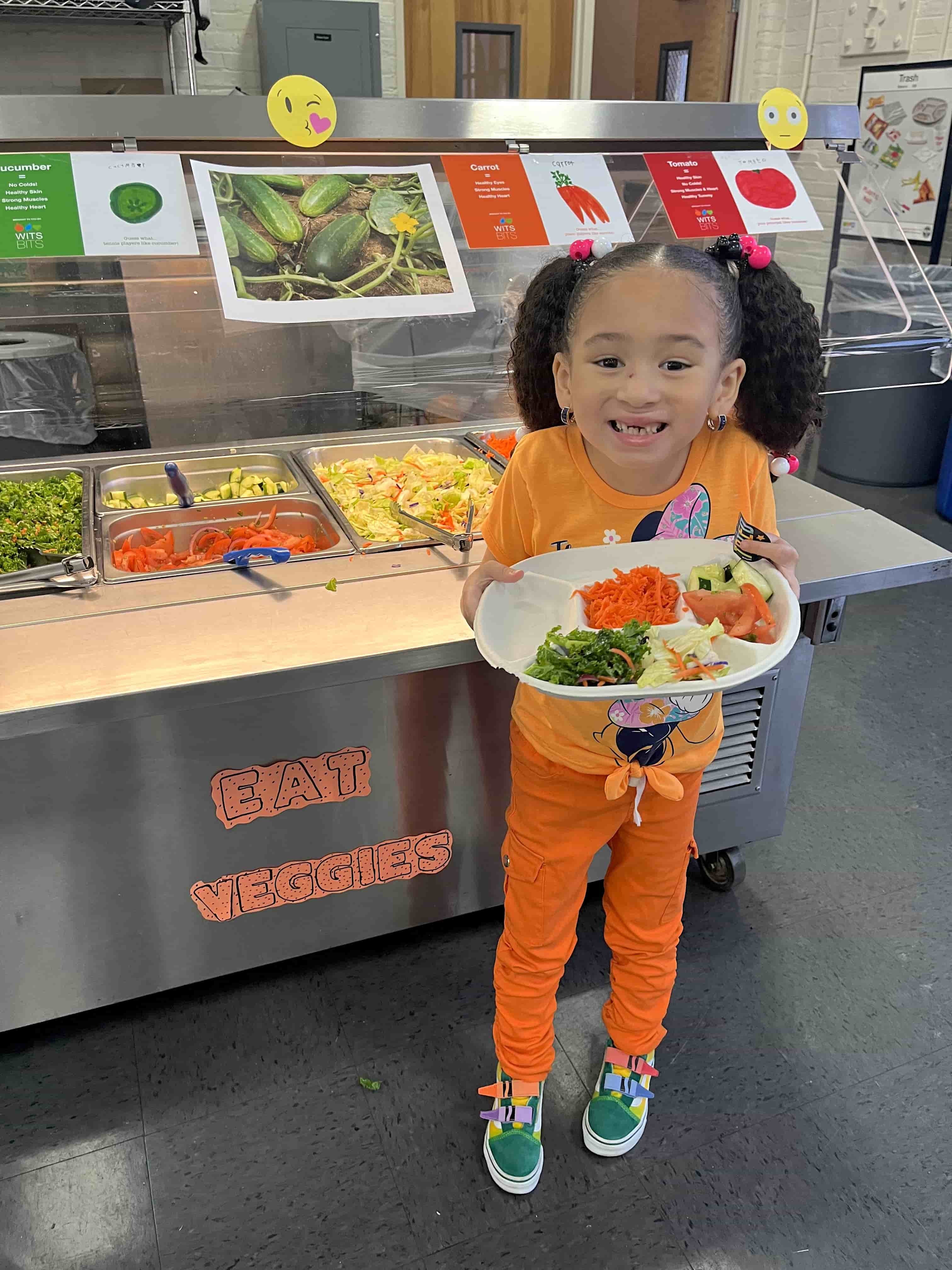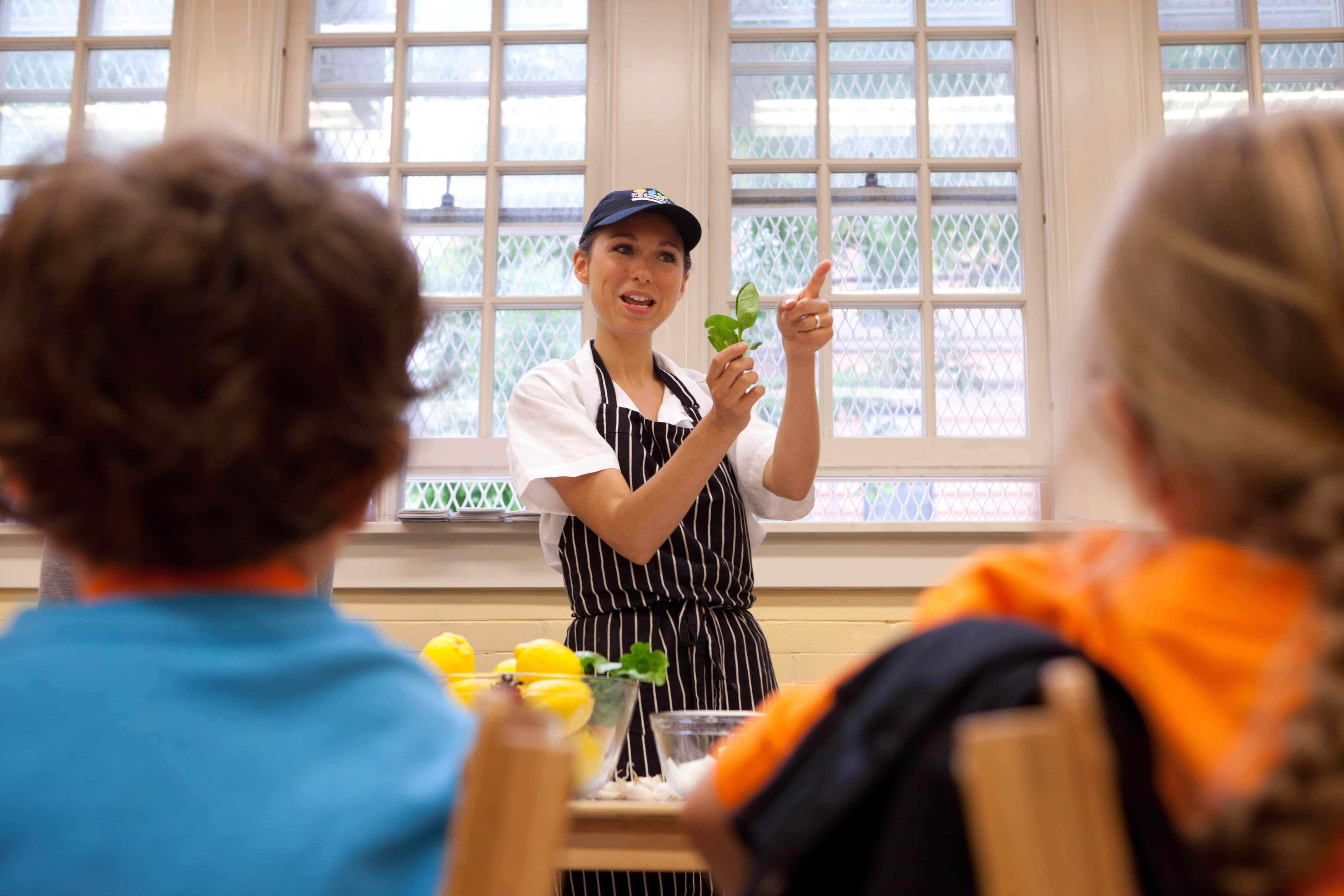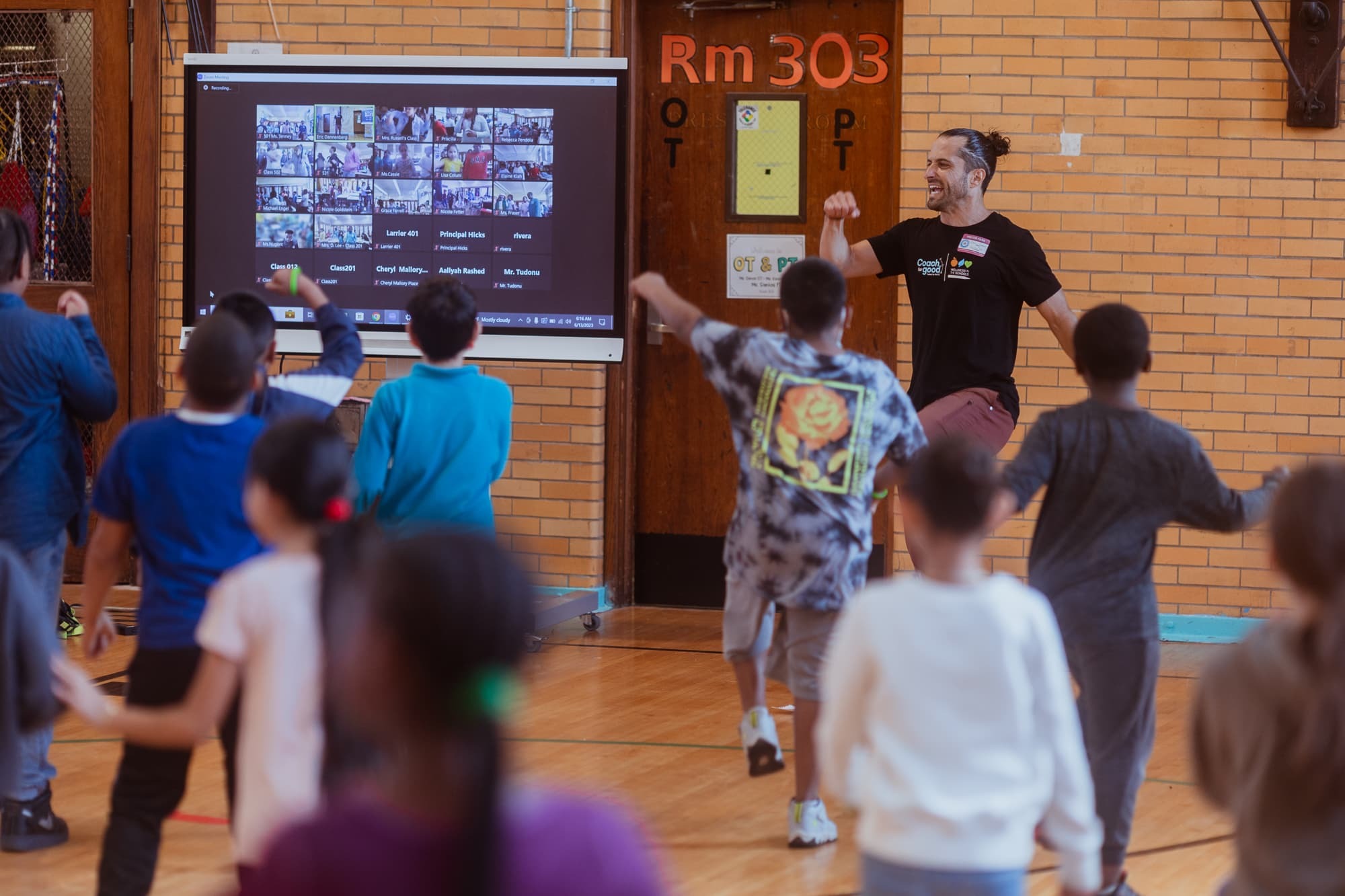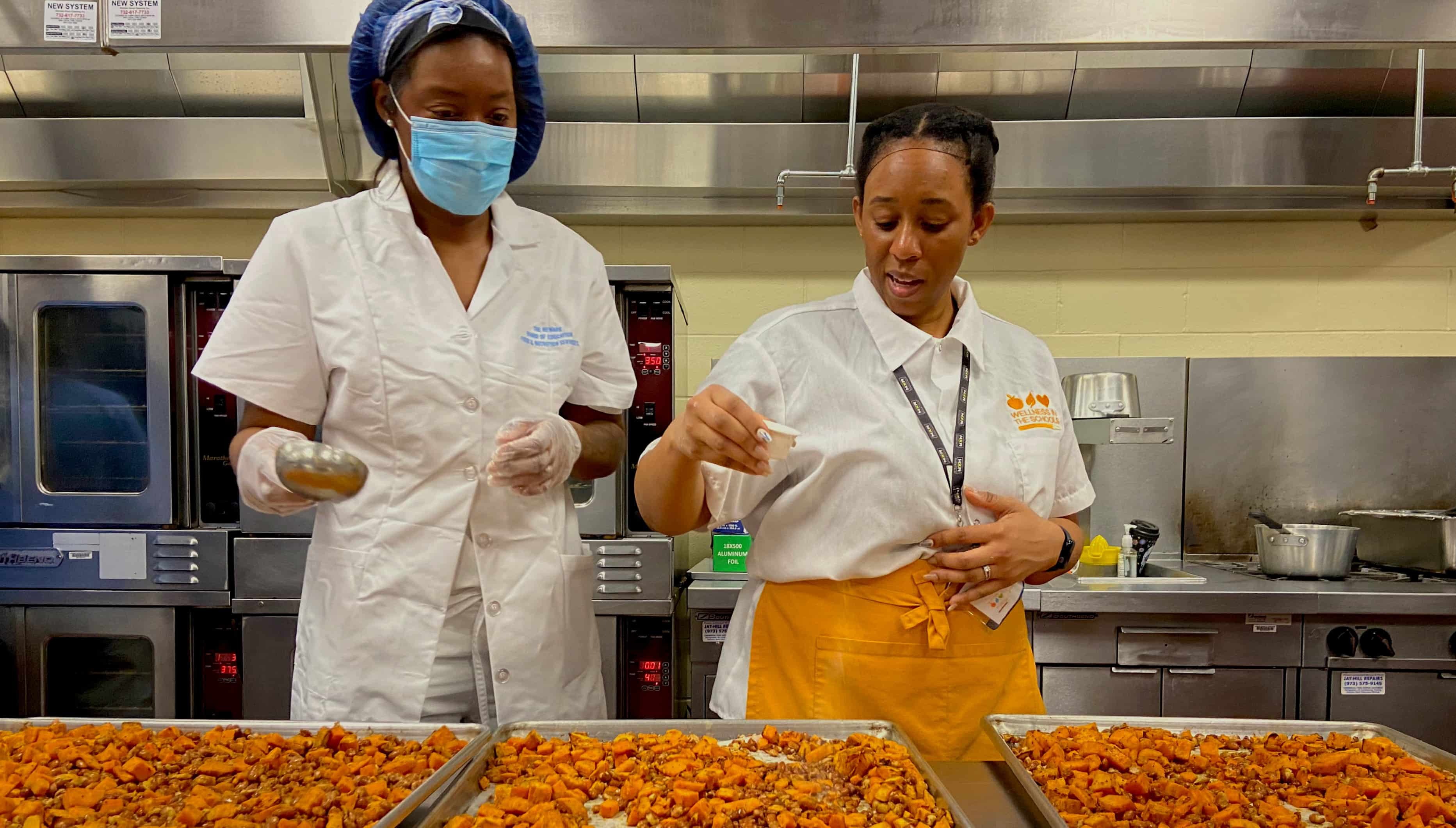Wellness in the Schools (WITS) is a national nonprofit that teaches children healthy habits to learn, live and thrive. They partner with public schools, chefs and coaches to ensure access to nourishing food and active play. Their collaborative approach and programming aim to shift the culture of schools to prioritize well-being. Founded in 2005 by Nancy Easton and Bill Telepan, Wellness in the Schools reaches over one million public school students across the country every school day. WITS is also a founding partner of ScratchWorks, collaborating with Whole Kids Foundation and other non-profits and school food leaders to support districts in moving to scratch cooking.
We reached out to Nancy Easton, Co-Founder and Executive Director at Wellness in the Schools, to get the scoop on how they are helping kids learn to love fresh, nutritious, whole foods.
Whole Kids Foundation (WKF): What is Wellness in the School's (WITS) approach to advancing children’s nutrition and wellness?
At Wellness in the Schools, our approach is a holistic one, centering on the needs of a district/community, and then providing specific programming to meet those needs. We are active listeners, arriving with an arsenal of talent and tools.







